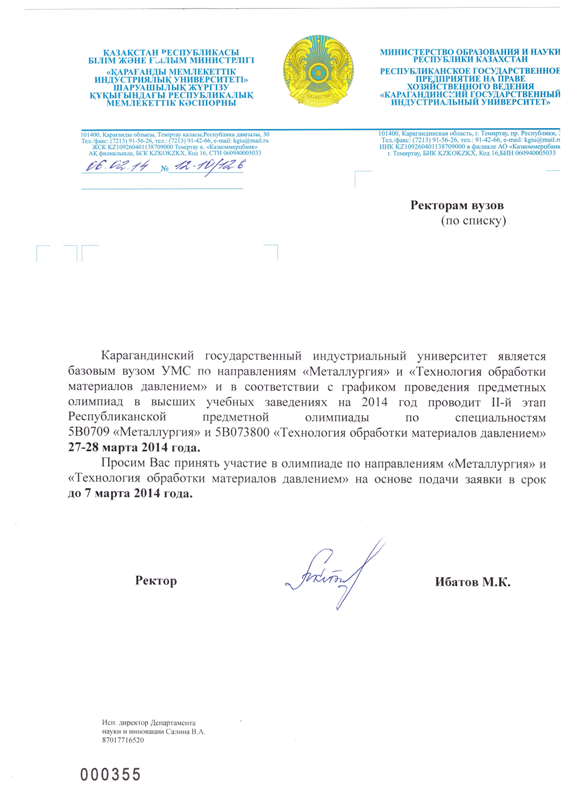Publishes of African Journal of Agricultural Research
AFRICAN JOURNAL OF AGRICULTURAL RESEARCH
Instructions for Authors
The African Journal of Agricultural Research (AJAR) (ISSN 1991- 637X) is an open access journal that publishes
high-quality solicited and unsolicited articles, in English, in all areas of agriculture including arid soil research and
rehabilitation, agricultural genomics, stored products research, tree fruit production, pesticide science, post
harvest biology and technology, seed science research, irrigation, agricultural engineering, water resources
management, agronomy, animal science, physiology and morphology, aquaculture, crop science, dairy science,
entomology, fish and fisheries, forestry, freshwater science, horticulture, poultry science, soil science, systematic
biology, veterinary, virology, viticulture, weed biology, agricultural economics and agribusiness.
The Journal welcomes the submission of manuscripts that meet the general criteria of significance and academic
excellence.
Submit manuscripts to the Editorial Office at www.ms.academicjournals.org
Article Types
Three types of manuscripts may be submitted:
Regular articles: These should describe new and carefully confirmed findings, and research methods should be
given in sufficient detail for others to verify the work. The length of a full paper should be the minimum required
to describe and interpret the work clearly.
Short Communications: A Short Communication is suitable for recording the results of complete small
investigations or giving details of new models, innovative methods or techniques. The style of main sections need
not conform to that of full-length papers. Short communications are 2 to 4 printed pages (about 6 to 12
manuscript pages) in length.
Reviews: Submissions of reviews and perspectives covering topics of current interest are welcome and
encouraged. Reviews should be concise and no longer than 4-6 printed pages (about 12 to 18 manuscript pages).
Reviews manuscripts are also peer-reviewed.
Review Process
All manuscripts are reviewed by an Editor and members of the Editorial Board or qualified external reviewers.
Authors cannot nominate reviewers. Only reviewers randomly selected from our database with specialization in
the subject area will be contacted to evaluate the manuscripts. The process will be blind review.
Decisions will be made as rapidly as possible, and the journal strives to return reviewers’ comments to authors
within a short period of time. The Editorial board will re-review manuscripts that are accepted pending revision. It
is the goal of the AJAR to publish manuscripts shortly after submission.
Regular articles
All portions of the manuscript must be typed double-spaced and all pages numbered starting from the title page.
The Title should be a brief phrase describing the contents of the paper. The Title Page should include the authors’
full names and affiliations, the name of the corresponding author along with phone, fax and E-mail information.
Present addresses of authors should appear as a footnote.
The Abstract should be informative and completely self-explanatory, briefly present the topic, scope of the work,
significant data, and point out major findings and conclusions. The Abstract should be 100 to 200 words in length.
Complete sentences, active verbs, and the third person should be used, and the abstract should be written in the
past tense. Standard nomenclature should be used and abbreviations should be avoided. No literature should be
cited.
Following the abstract, about 3 to 10 key words that will provide indexing references should be listed.
A list of non-standard Abbreviations should be added. In general, non-standard abbreviations should be used only
when the full term is very long and used often. Each abbreviation should be spelled out and introduced in
parentheses the first time it is used in the text.
The Introduction should provide a clear statement of the problem, the relevant literature on the subject, and the
proposed approach or solution. It should be understandable to colleagues from a broad range of disciplines.
Materials and methods should be complete enough to allow possible replication of the research. However, only
truly new research methods should be described in detail; previously published methods should be cited, and
important modifications of published methods should be mentioned briefly. Capitalize trade names and include
the manufacturer’s name and address. Subheadings should be used. Methods in general use need not be
described in detail.
Results should be presented with clarity and precision. The results should be written in the past tense when
describing author’s findings. Previously published findings should be written in the present tense. Results should
be explained, but largely without referring to the literature. Discussion, speculation and detailed interpretation of
data should not be included in the Results but should be put into the Discussion section.
The Discussion should interpret the findings in view of the results obtained in this and in past studies on the topic.
State the conclusions in a few sentences at the end of the paper. The Results and Discussion sections can include
subheadings, and when appropriate, both sections can be combined.
The Acknowledgments of people, grants, funds, etc should be brief.
Tables should be kept to a minimum and be designed to be as simple as possible. Tables are to be typed double-
spaced throughout, including headings and footnotes. Each table should be on a separate page, numbered
consecutively in Arabic numerals and supplied with a heading and a legend. Tables should be self-explanatory
without reference to the text. The details of the research methods should preferably be described in the legend
instead of in the text. The same data should not be presented in both table and graph form or repeated in the
text.
Figure legends should be typed in numerical order on a separate sheet. Graphics should be prepared using
applications capable of generating high resolution GIF, TIFF, JPEG or PowerPoint before pasting in the Microsoft
Word manuscript file. Tables should be prepared in Microsoft Word. Use Arabic numerals to designate figures and
upper case letters for their parts (Figure 1). Begin each legend with a title and include sufficient description so
that the figure is understandable without reading the text of the manuscript. Information given in legends should
not be repeated in the text.
References: In the text, a reference identified by means of an author’s name should be followed by the date of
the reference in parentheses. When there are more than two authors, only the first author’s name should be
mentioned, followed by ‘et al’. In the event that an author cited has had two or more works published during the
same year, the reference, both in the text and in the reference list, should be identified by a lower case letter like
‘a’ and ‘b’ after the date to distinguish the works.
Examples:
Smith (2000), Wang et al. (2003), (Kelebeni, 1983), (Singh and Chandra, 1992), (Chege, 1998; Bill, 1987a,b; Cohen,
1993, 1995), (Bauer et al., 2001)
References should be listed at the end of the paper in alphabetical order. Articles in preparation or articles
submitted for publication, unpublished observations, personal communications, etc. should not be included in the
reference list but should only be mentioned in the article text (e.g., A. Kingori, University of Nairobi, Kenya,
personal communication). Journal names are abbreviated according to Chemical Abstracts. Authors are fully
responsible for the accuracy of the references.
Examples:
Li XQ, Tan A, Voegtline M, Bekele S, Chen CS, Aroian RV (2008). Expression of Cry5B protein from Bacillus
thuringiensis in plant roots confers resistance to root-knot nematode. Biol. Control 47: 97-102.
Pandey R, Kalra A (2003). Root knot disease of ashwagandha Withania somnifera and its ecofriendly cost effective
management. J. Mycol. Pl. Pathol. 33(2): 240-245.
Charnley AK (1992). Mechanisms of fungal pathogenesis in insects with particular reference to locusts. In: Lomer
CJ, Prior C (eds) Biological Controls of Locusts and Grasshoppers: Proceedings of an international workshop held at
Cotonou, Benin. Oxford: CAB International, pp. 181-190.
Mundree SG, Farrant JM (2000). Some physiological and molecular insights into the mechanisms of desiccation
tolerance in the resurrection plant Xerophyta viscasa Baker. In Cherry et al. (eds) Plant tolerance to abiotic
stresses in Agriculture: Role of Genetic Engineering, Kluwer Academic Publishers, Netherlands, pp. 201-222.
Short Communications
Short Communications are limited to a maximum of two figures and one table. They should present a complete
study that is more limited in scope than is found in full-length papers. The items of manuscript preparation listed
above apply to Short Communications with the following differences: (1) Abstracts are limited to 100 words; (2)
instead of a separate Materials and Methods section, research methods may be incorporated into Figure Legends
and Table footnotes; (3) Results and Discussion should be combined into a single section.
Proofs and Reprints: Electronic proofs will be sent (e-mail attachment) to the corresponding author as a PDF file.
Page proofs are considered to be the final version of the manuscript. With the exception of typographical or
minor clerical errors, no changes will be made in the manuscript at the proof stage. Because AJAR will be
published online without access restrictions, authors will have electronic access to the full text (PDF) of the article.
Authors can download the PDF file from which they can print unlimited copies of their articles.
Copyright: Submission of a manuscript implies: that the work described has not been published before (except in
the form of an abstract or as part of a published lecture, or thesis) that it is not under consideration for
publication elsewhere; that if and when the manuscript is accepted for publication, the authors agree to
automatic transfer of the copyright to the publisher.
 Қарағанды индустриялық университеті – тау-кен және металлургия саласына арналған жоғары білікті кадрларды дайындау...
Қарағанды индустриялық университеті – тау-кен және металлургия саласына арналған жоғары білікті кадрларды дайындау...

































